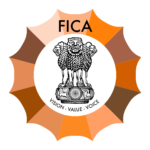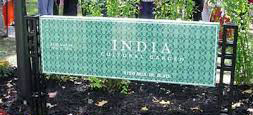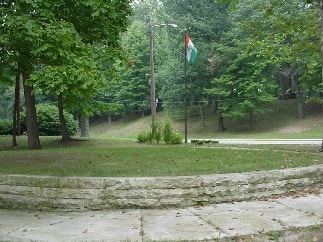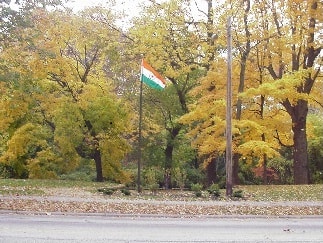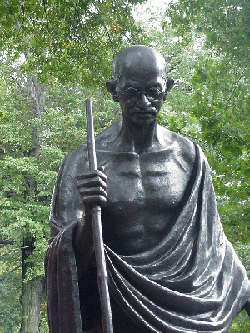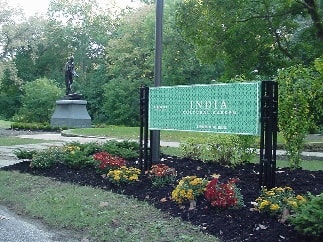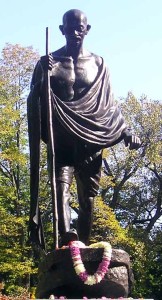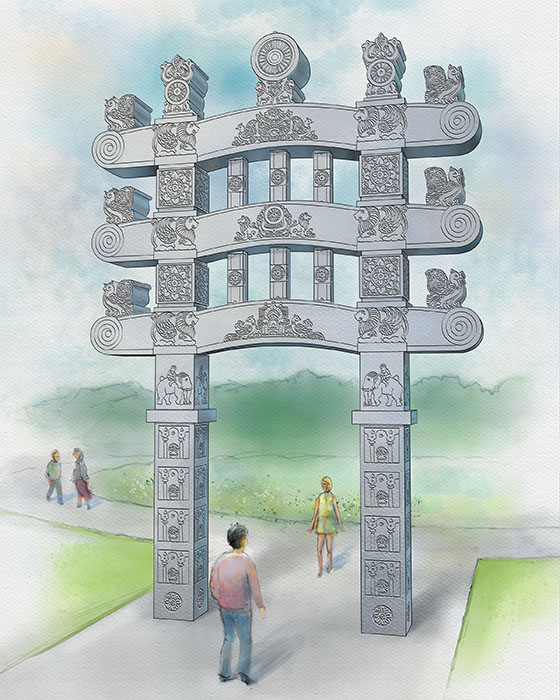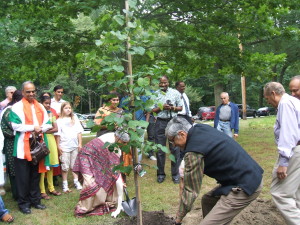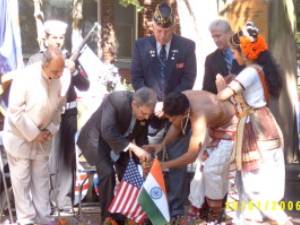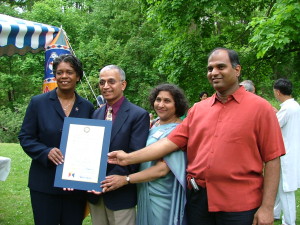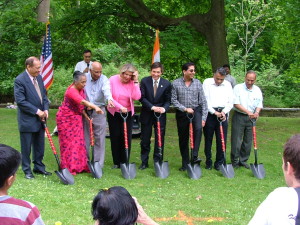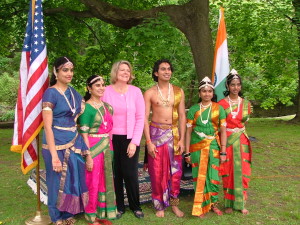The India Garden is part of the Cleveland Cultural Gardens, the hidden jewel within Rockefeller Park– a two-mile tranquil stretch north of University Circle. The India Garden is located off Martin Luther King Rd. south of St. Clair Avenue and the Rockefeller Park Greenhouse.
The Cultural Gardens were conceived for the purpose of honoring and celebrating Cleveland’s cultural diversity and to symbolize peace, brotherhood, and harmony among people of all nations. They were built in the early 1900s and are the result of a joint effort between the various ethnic communities, the City of Cleveland and the Federal Government. They continue to remain a major landmark in the city of Cleveland. They represent the first, most comprehensive and finest memorial to peace, brotherhood and unity in this country.
Although the plot for the India Garden was given to the community many years ago, it was only in 1997, through the efforts of NetIP, led by Seema Haria that the India Garden first took shape. Lacking any permanent structures, the garden subsequently ceased to exist. In 1999, FICA, under the leadership of then President Raj Pillai undertook the task of building a permanent Garden by mobilizing community support. Then board member (and subsequently FICA president) Vijaya Emani championed the effort.
The India Cultural Garden (ICG) Committee was formed in 2002 to choose a design for the garden and to move the project forward. After evaluating several firms, the committee invited proposals from 3 architects. The winning design was the one submitted by architect Chester Turner, and it was further developed by landscape architect Jim McKnight. Key features of the design are a circular walkway with granite pillars carrying inscriptions, a Mahatma Gandhi Statue, a gate reminiscent of the Sanchi Stupa, and steps leading to Doan Brook, the stream which flows behind the garden (reminiscent of steps on the banks of many Indian rivers).
The groundbreaking for the garden took place on May 22, 2005. Cleveland Mayor Jane Campbell and dignitaries from the Indian community participated in the ceremony. Phase I of the garden was completed in September, and the Indian flag has been flying at the site ever since.
The Mahatma Gandhi statue was installed on October 1, 2006. The 10 ft. bronze statue, sculpted by world-famous sculptor Gautam Pal of Kolkatta sits atop a 7 ft granite pedestal. The dedication of the statue coincided with the celebration of One world Day, the annual celebration of Cleveland?s ethnic diversity. Ambassador Ronen Sen of India, Congressman Dennis Kucinich, Rev. Dr. Otis Moss, Jr., and Cleveland City Councilwoman Sabra Pierce Scott unveiled the statue.
The symbolism of a Gandhi statue beside a boulevard honoring Dr. Martin Luther King, Jr. is inescapable. The Heritage Pillars, dedicated on May 26, 2007 marked another milestone in the development of the garden. Visitors to the garden can get a glimpse of India?s ancient culture, history and legacy from the quotations and a narrative engraved on six granite pillars, The pillars ring the perimeter of the circular walkway. The themes, Universal Brotherhood, Legacy, Artistic Traditions, Leadership, Modern India and Connections tell a compelling story. Prof. Rajmohan Gandhi, the grandson of the Mahatma, planted a tree at the India Garden on September 6, 2008.
A 24-ft tall granite gate, patterned after similar structures at the Sanchi Stupa in Madhya Pradesh, India, is expected to be installed at the garden in the next phase of its development.
Please help support the ongoing development of this symbol of peace and universal brotherhood. To reach the India Garden, take the Martin Luther King Rd. exit off I-90 and go south towards University Circle. The India Garden is situated on the west side of Martin Luther King Blvd. between Superior and St. Clair Avenues, adjacent to the Finnish Garden and directly opposite the Syrian Garden.
